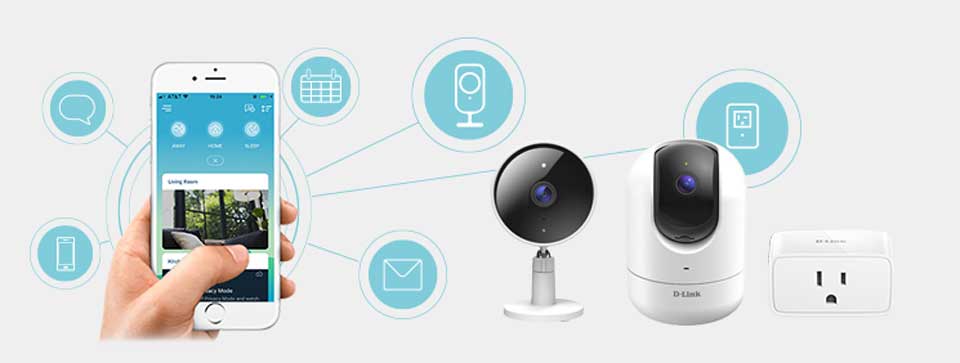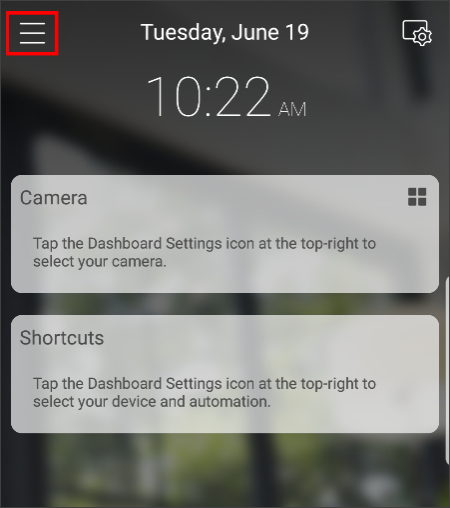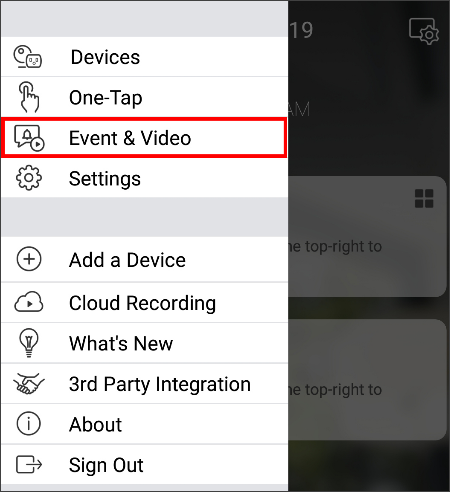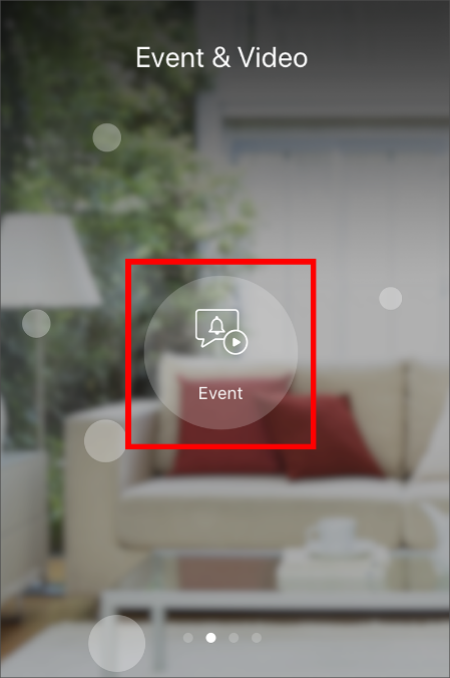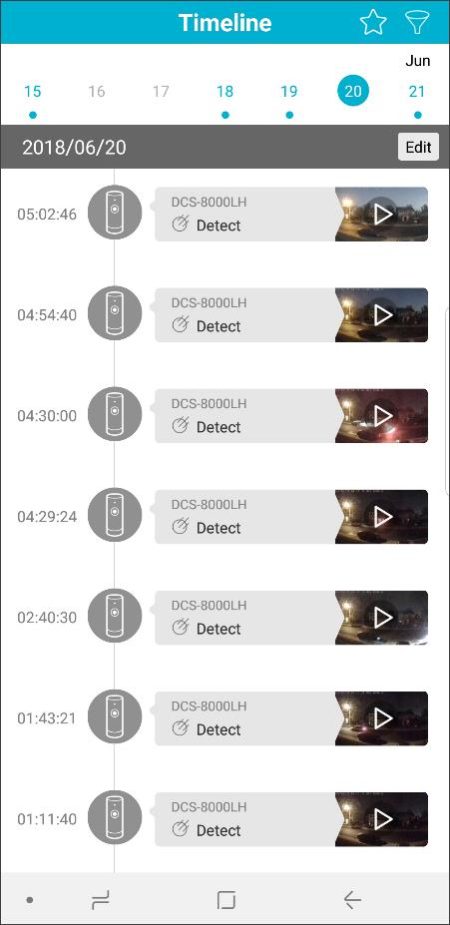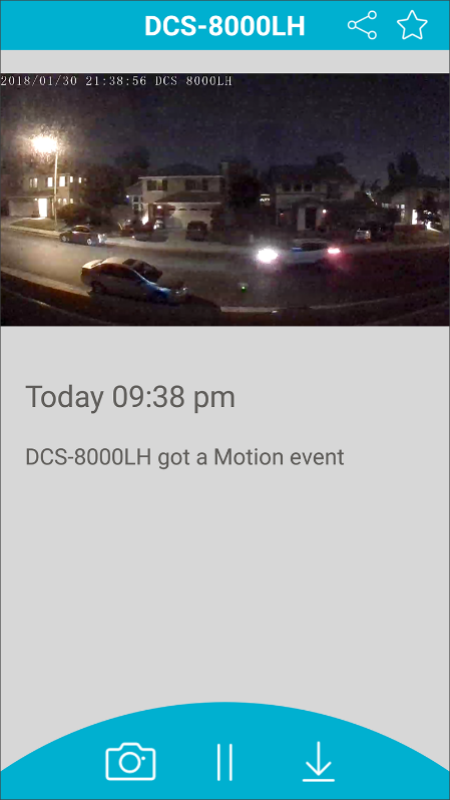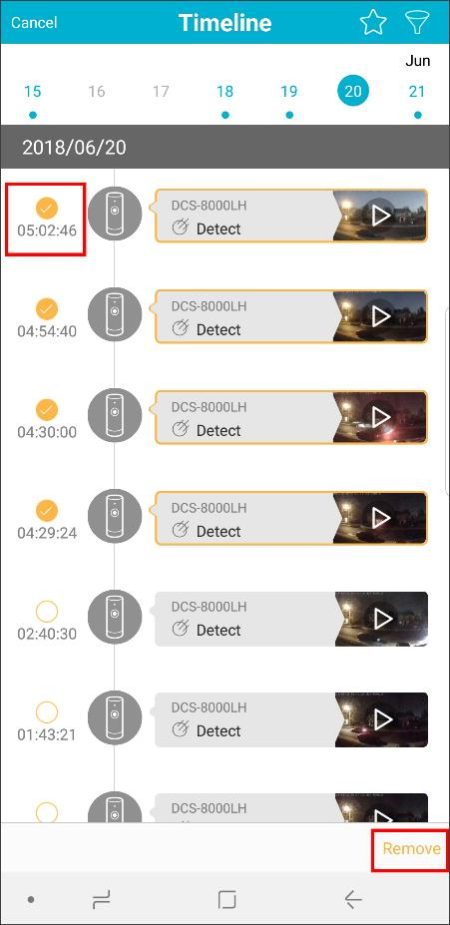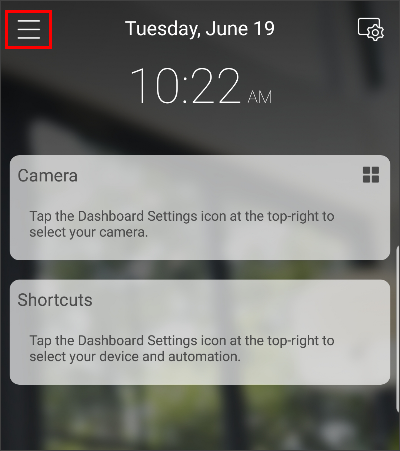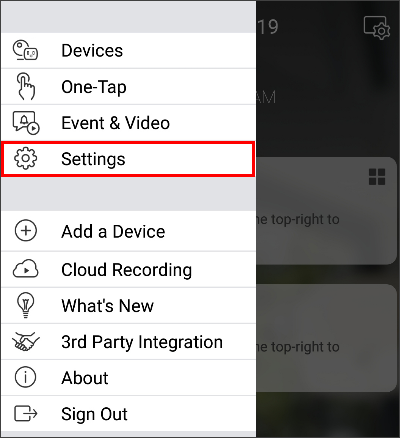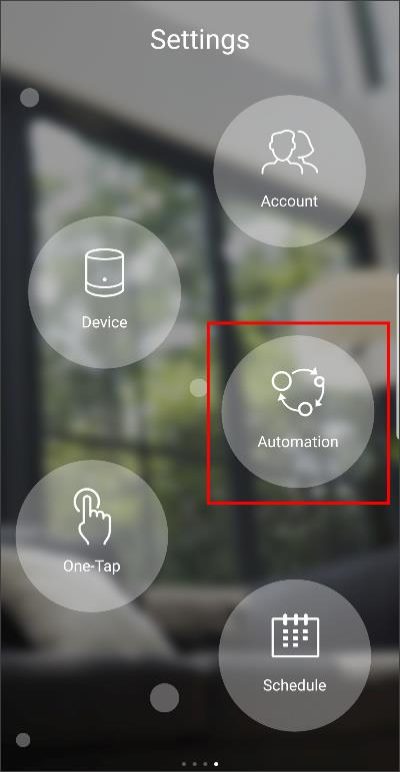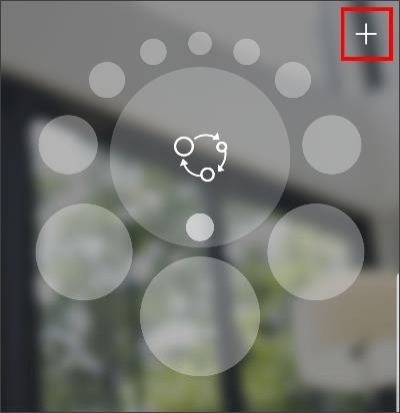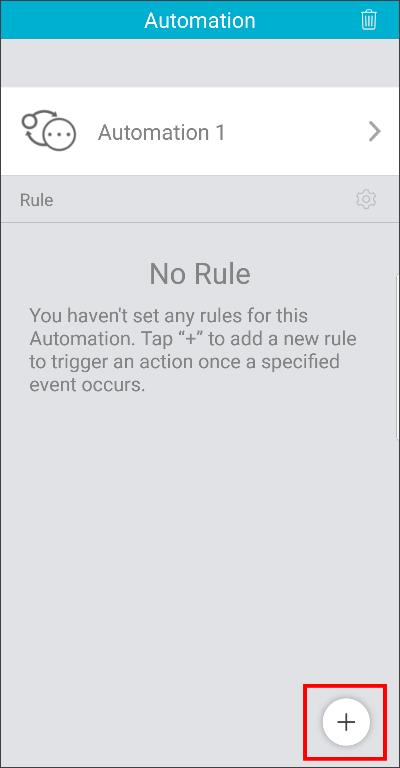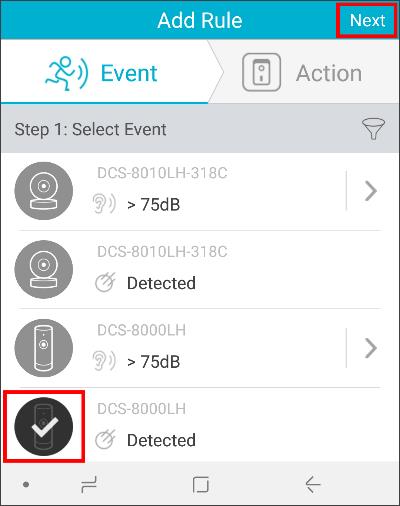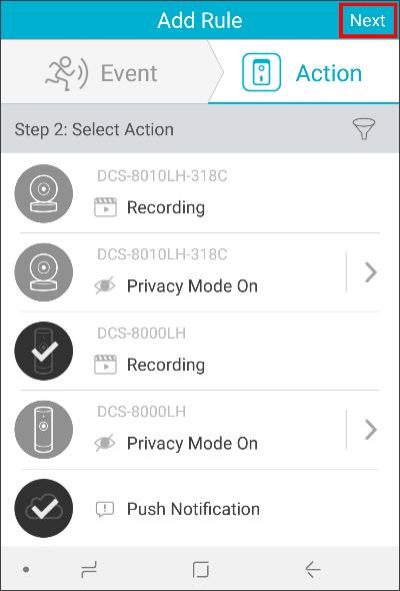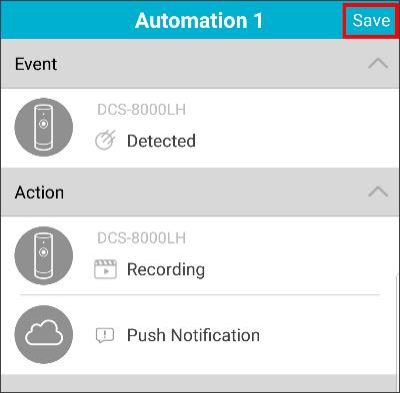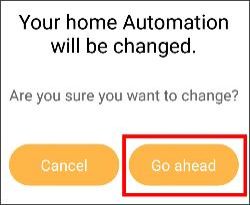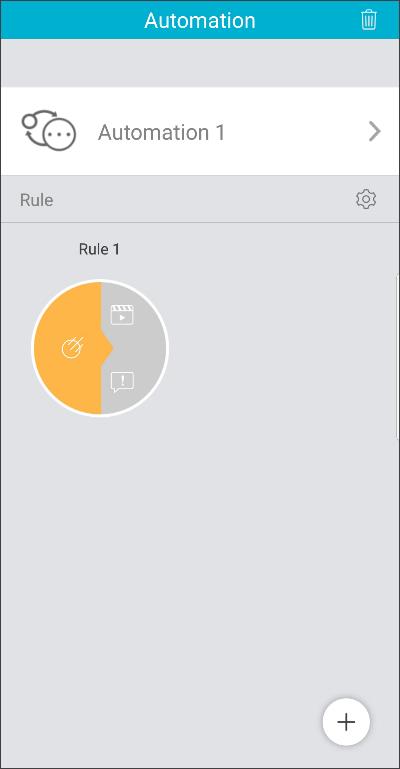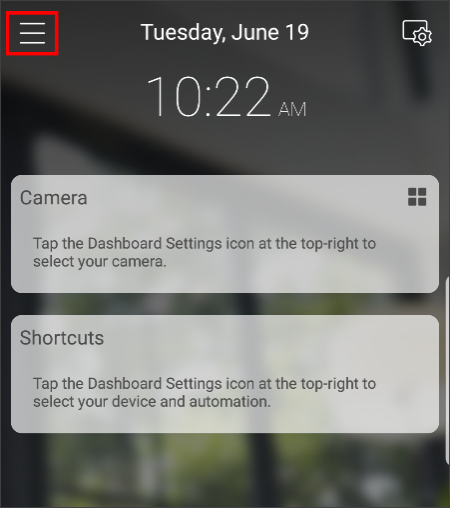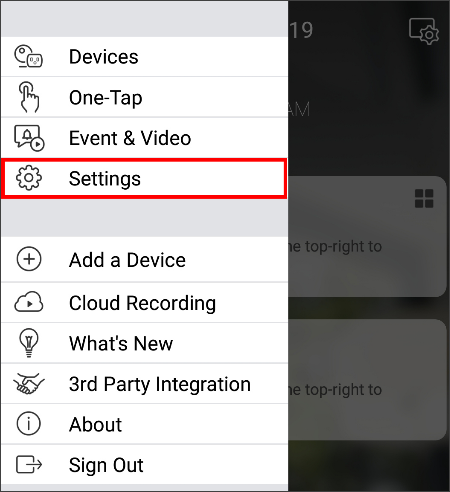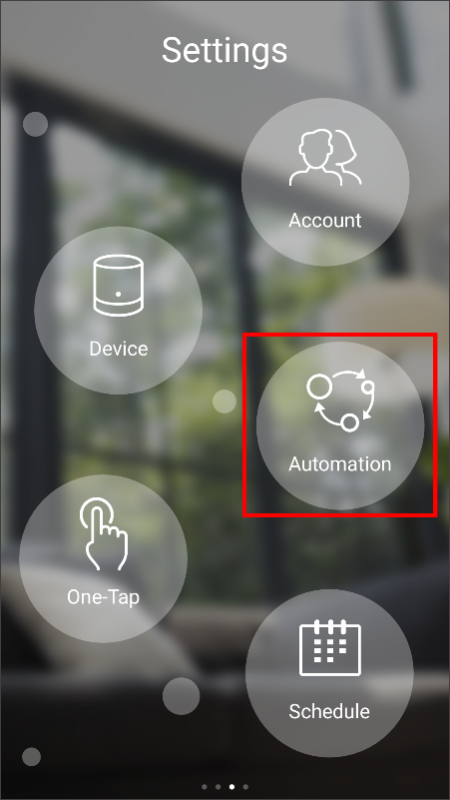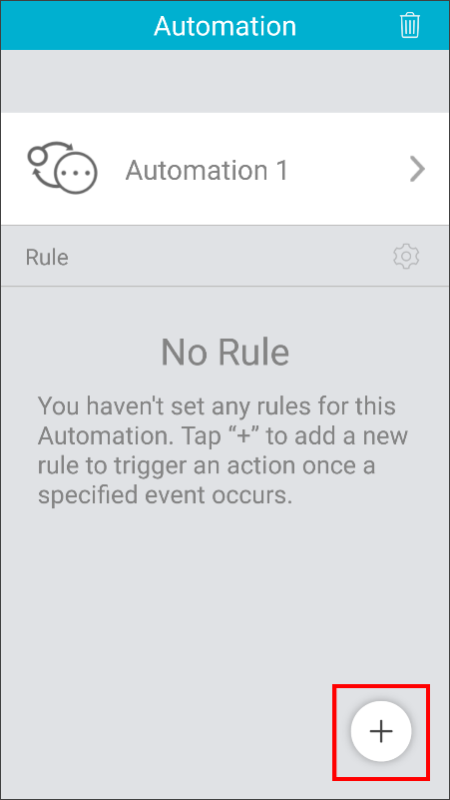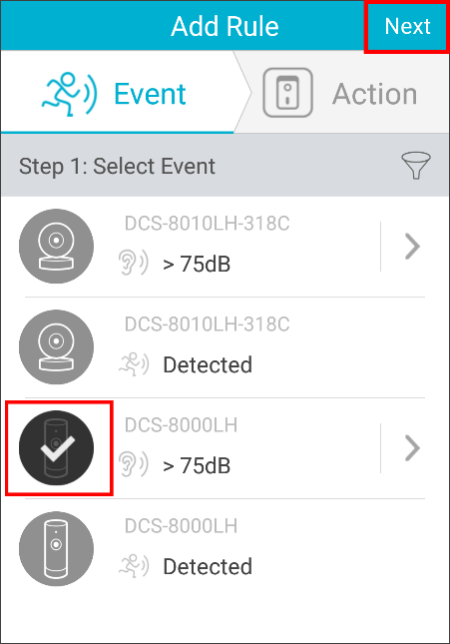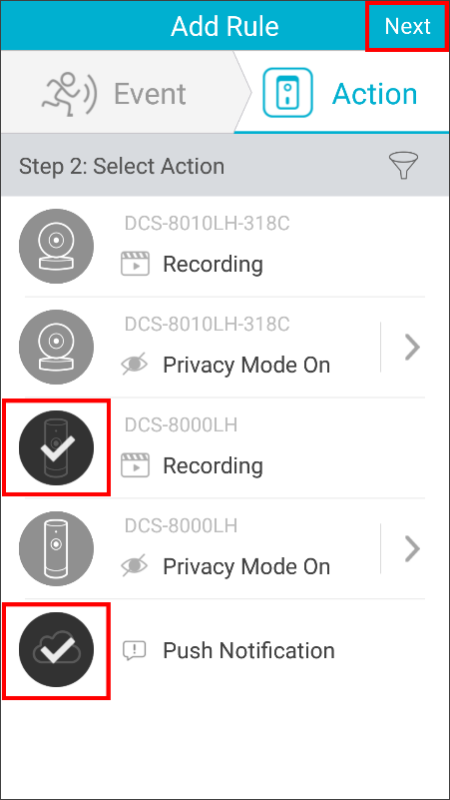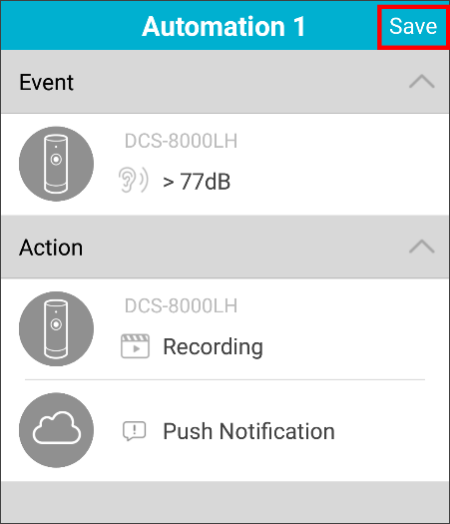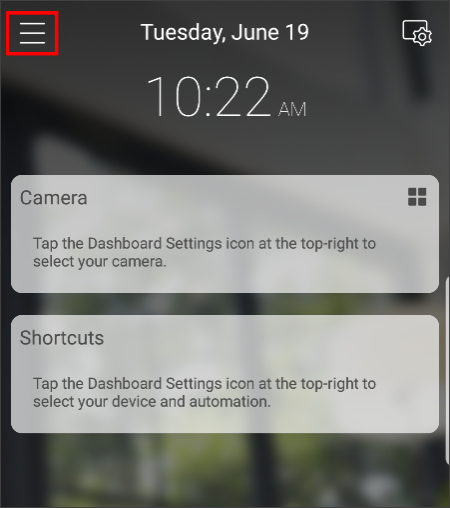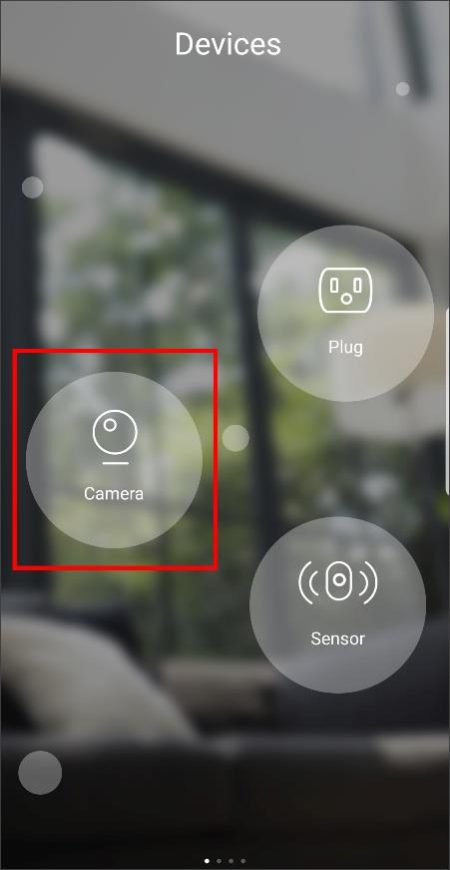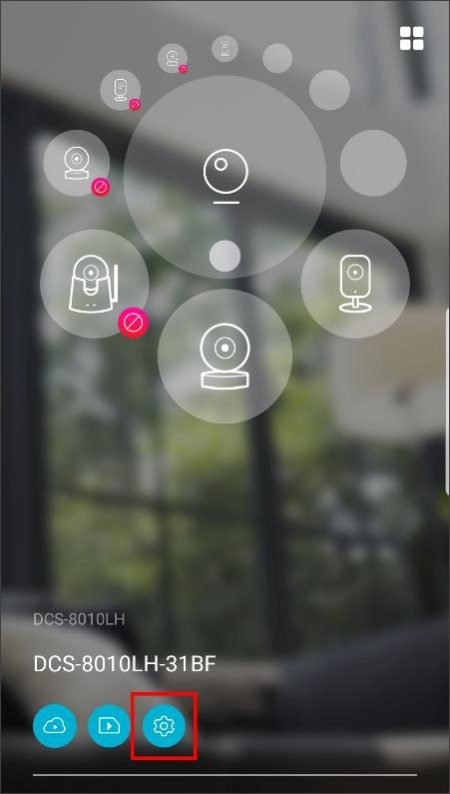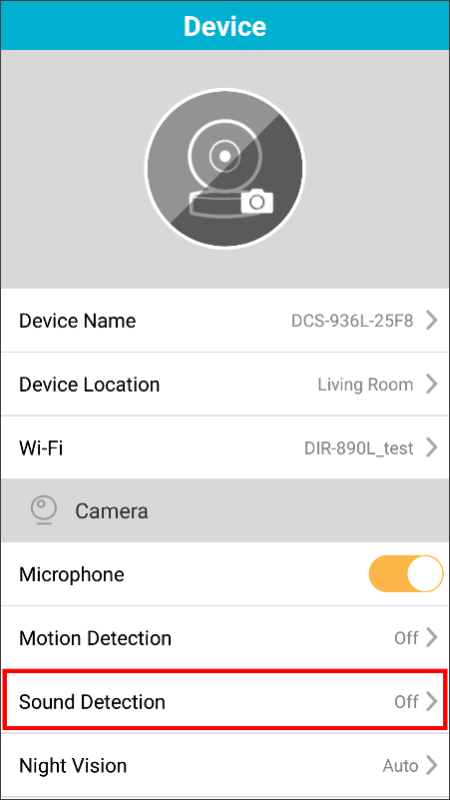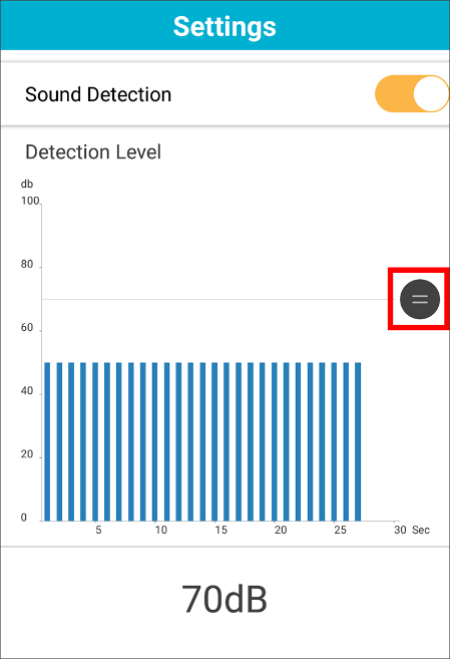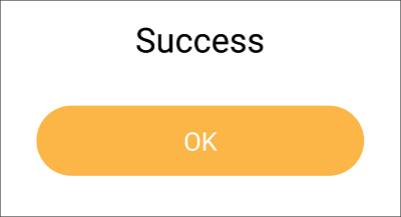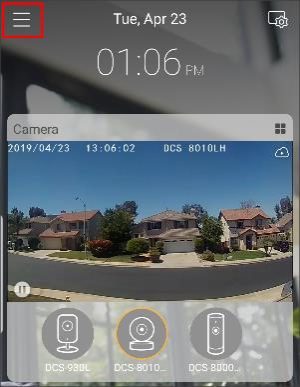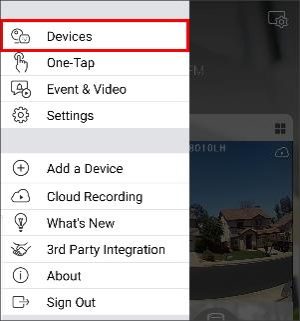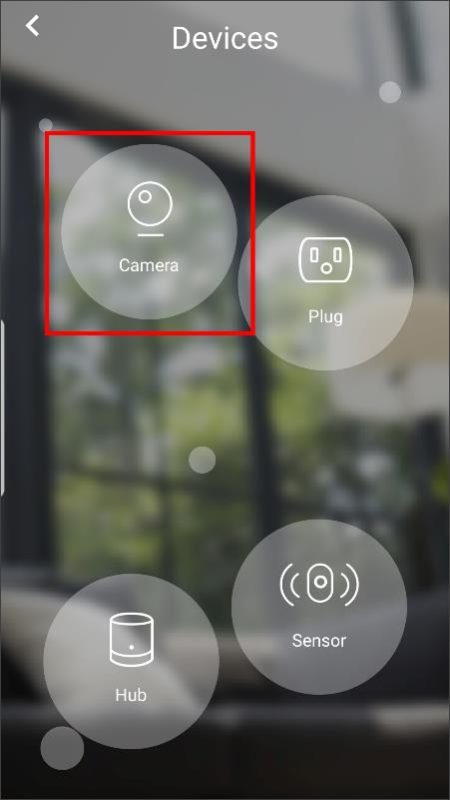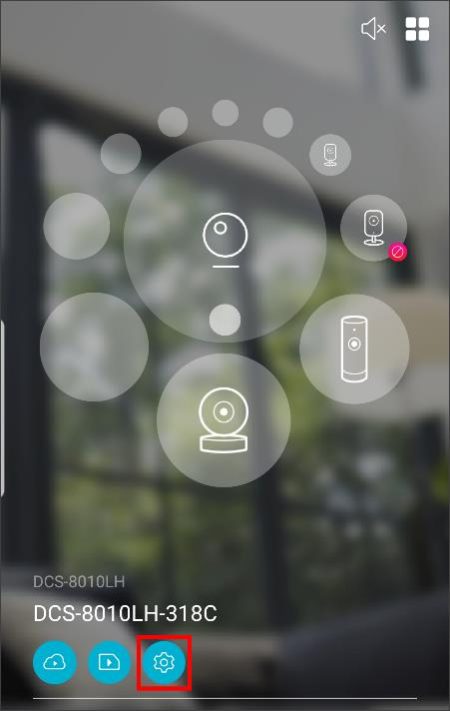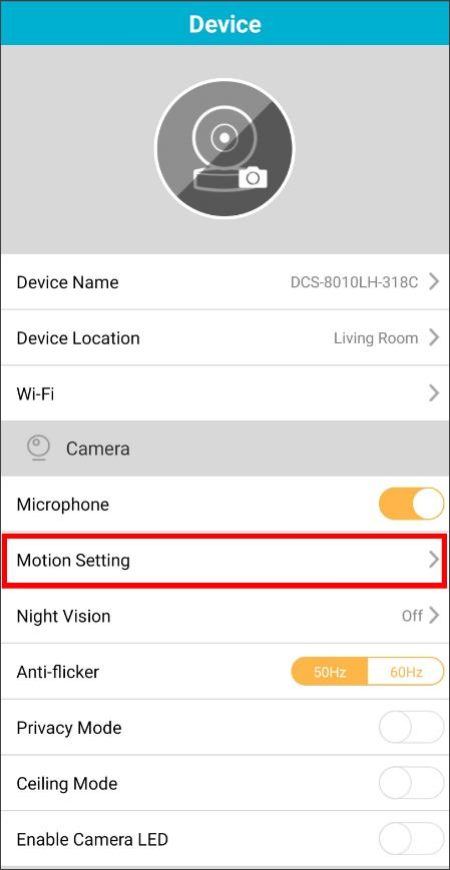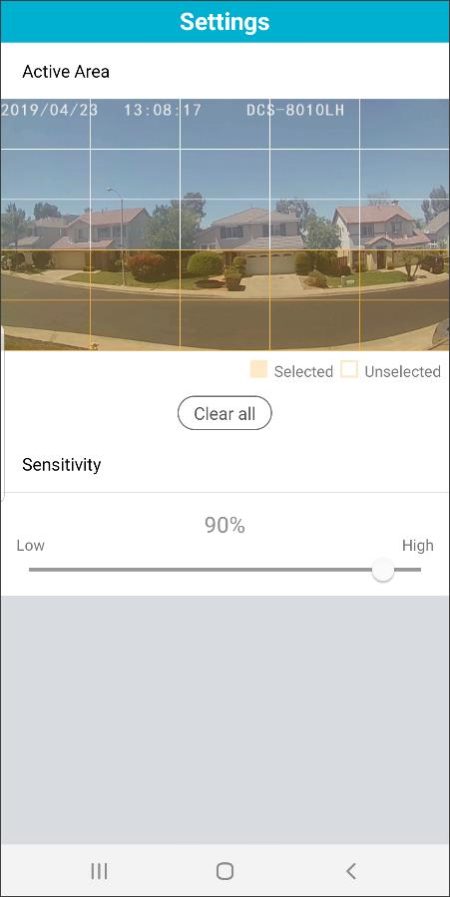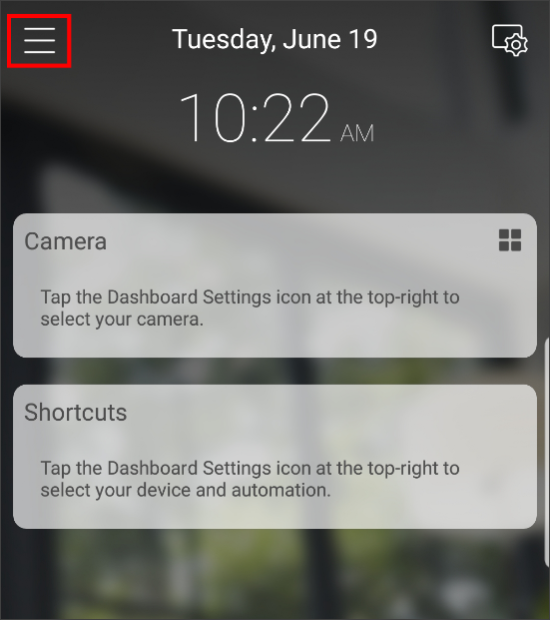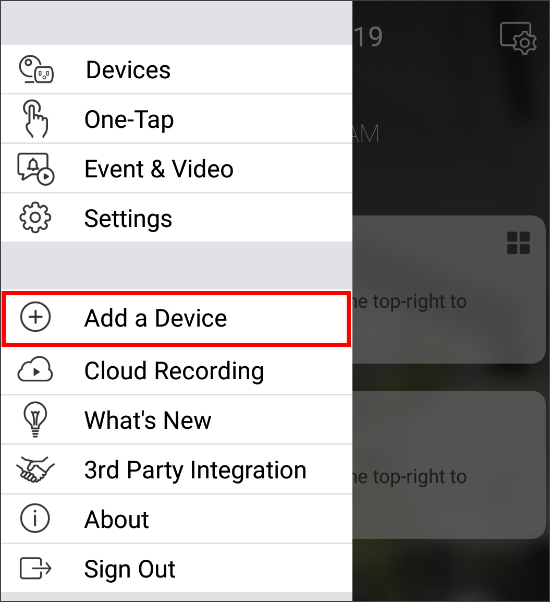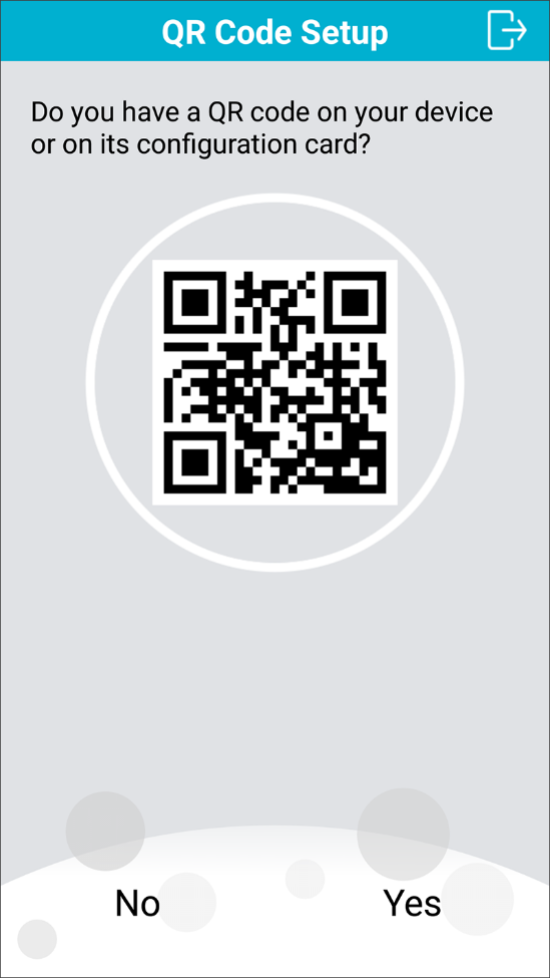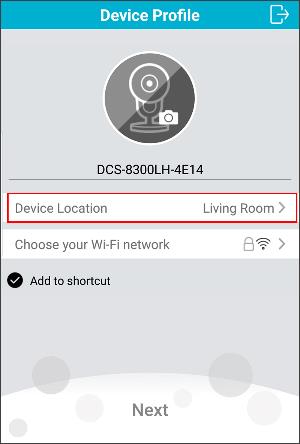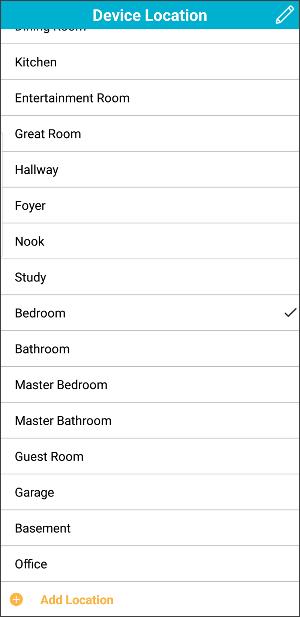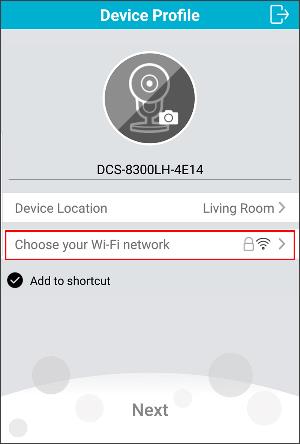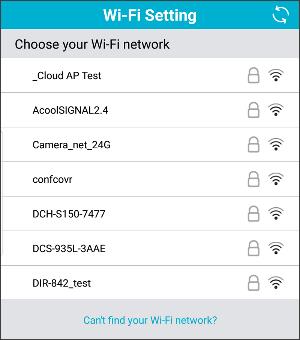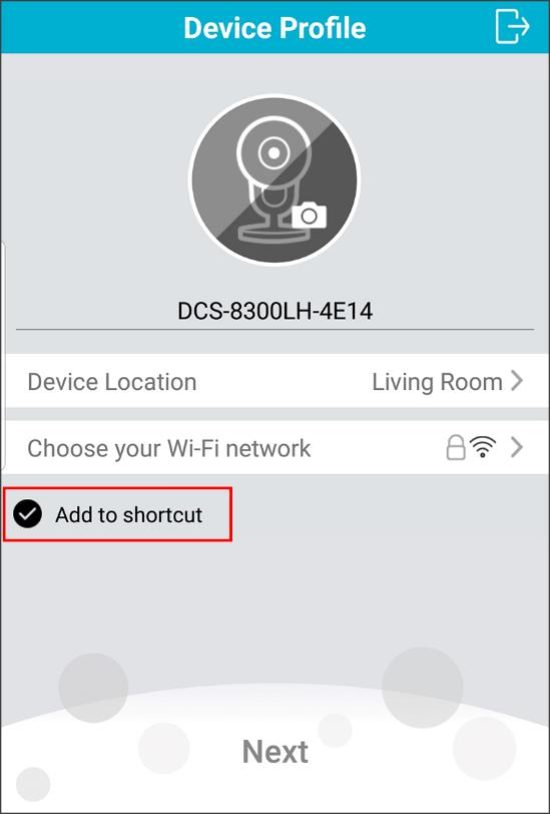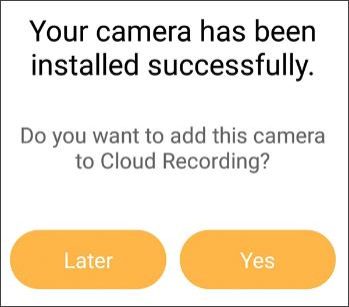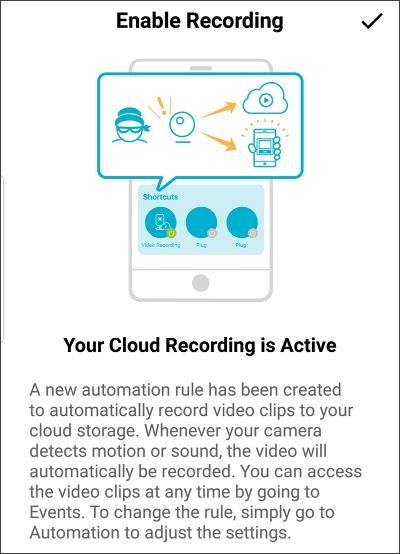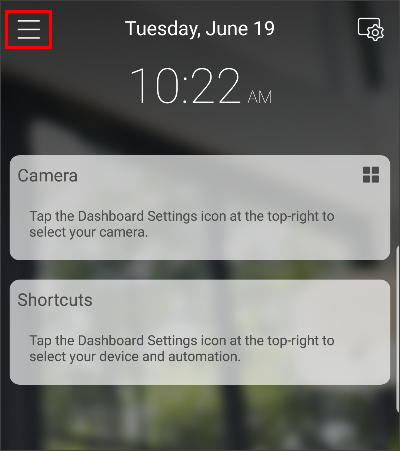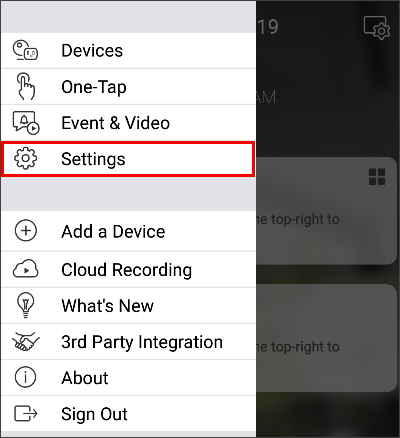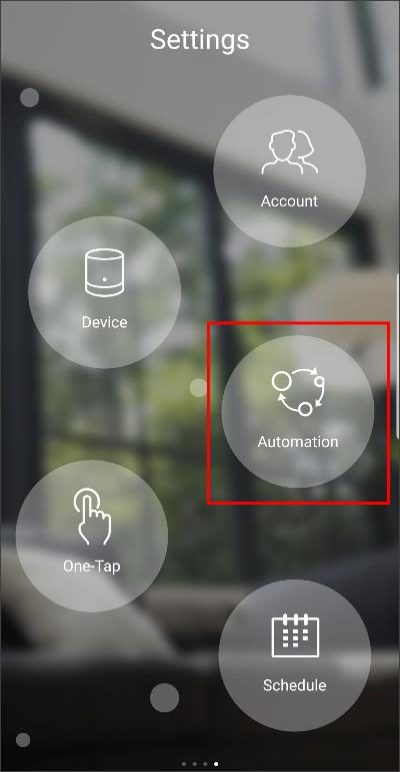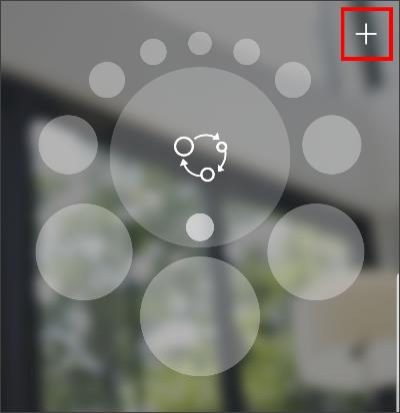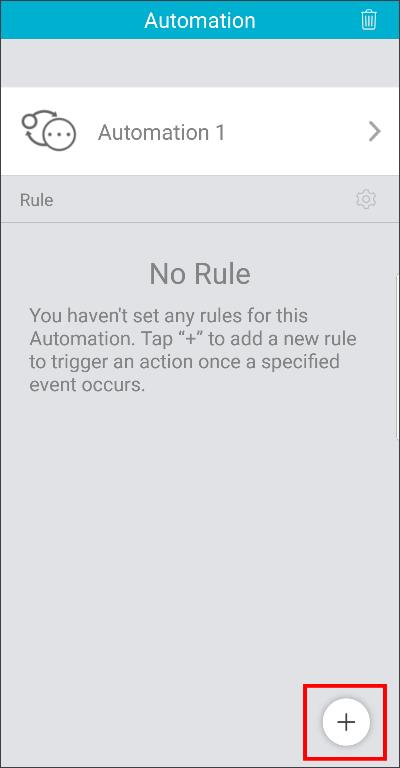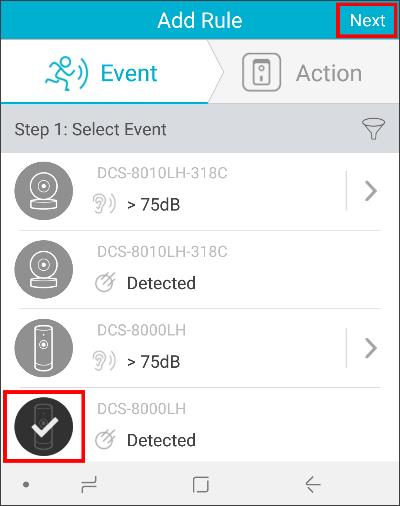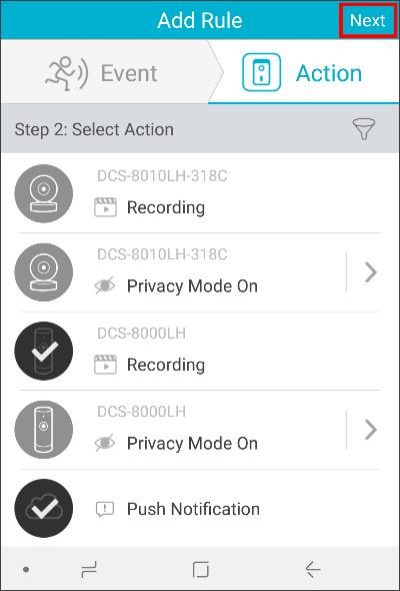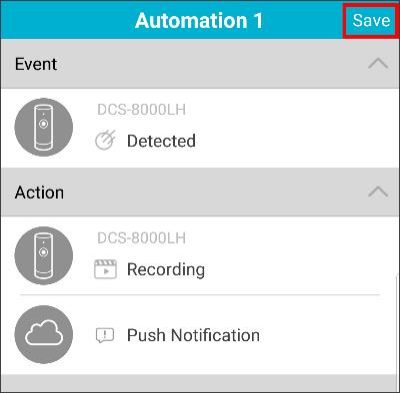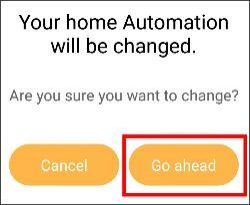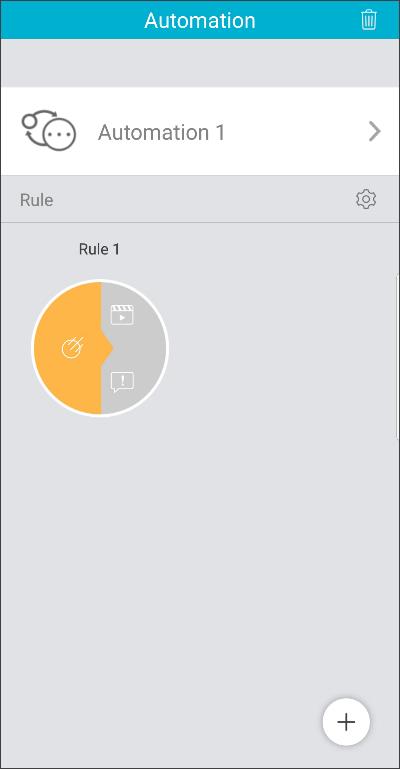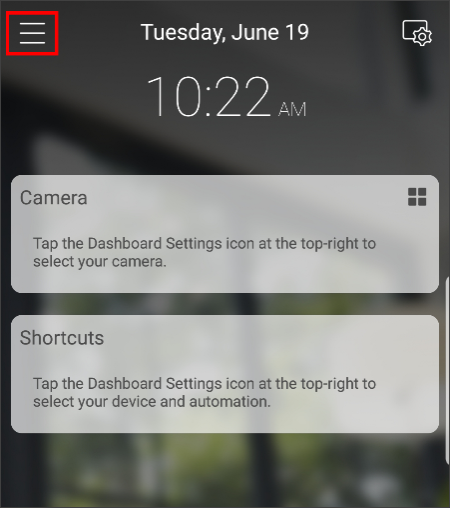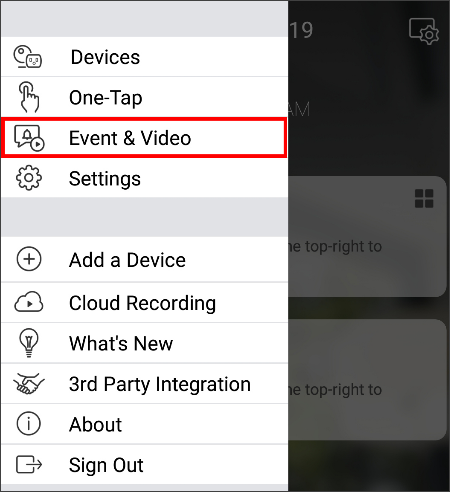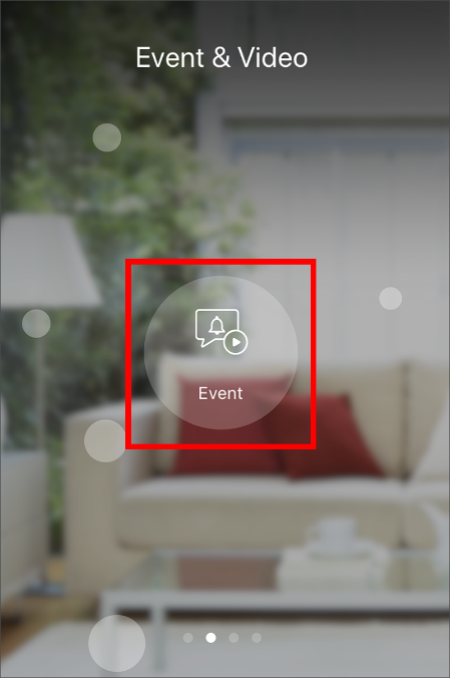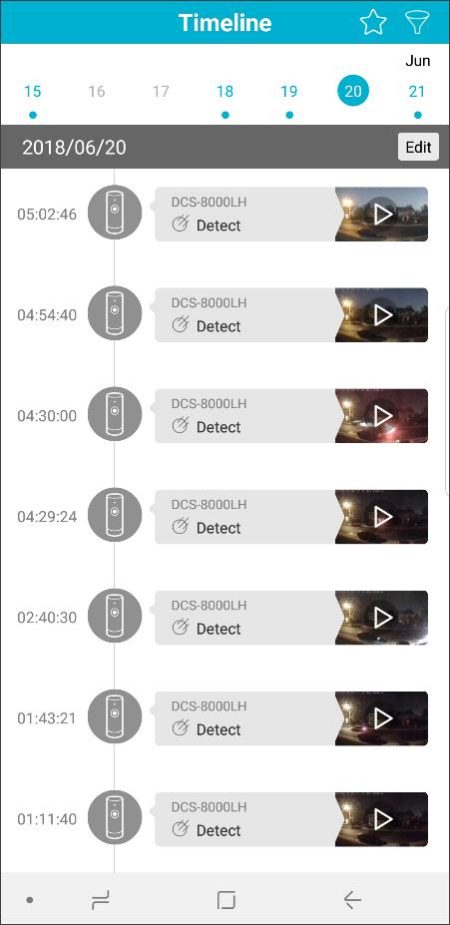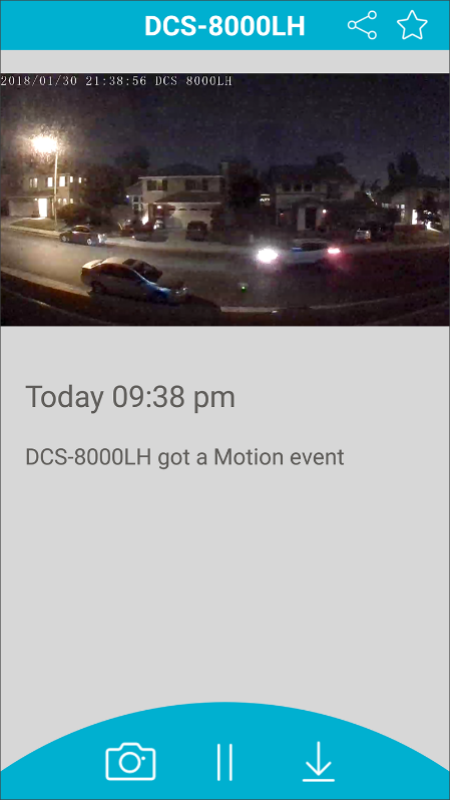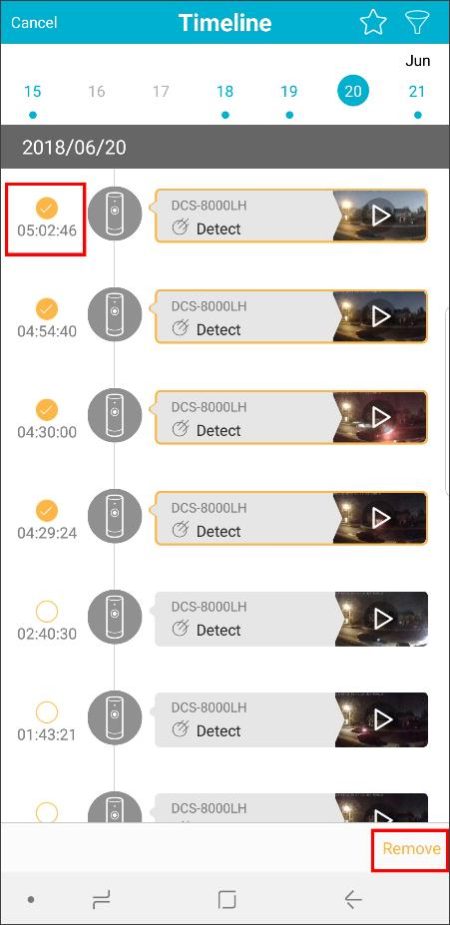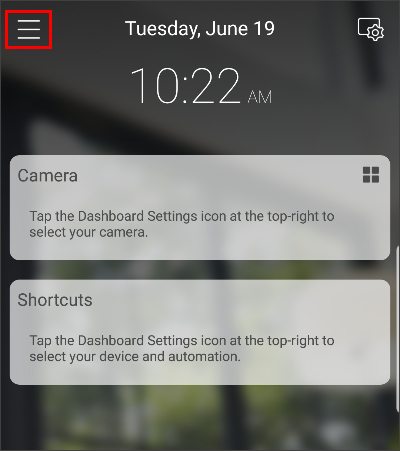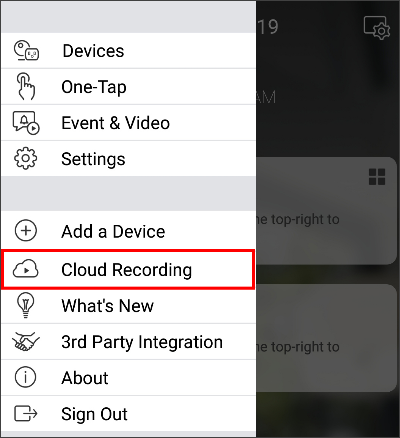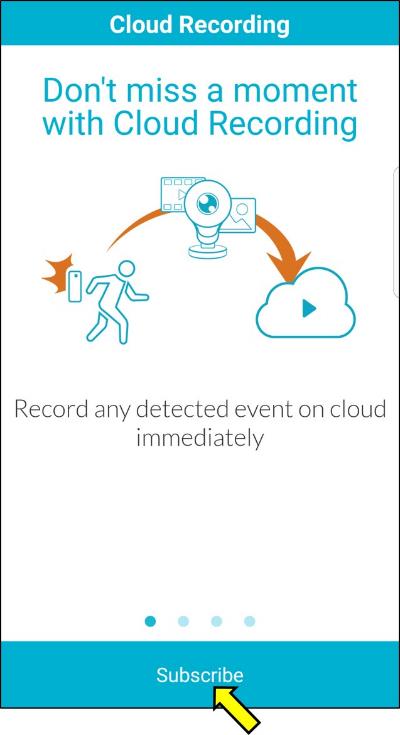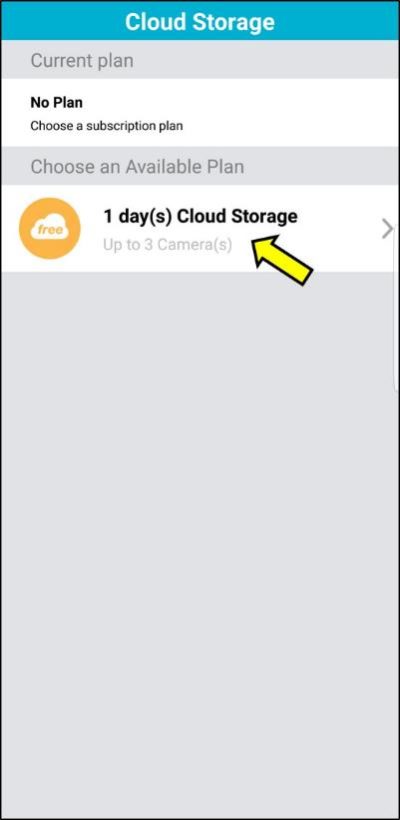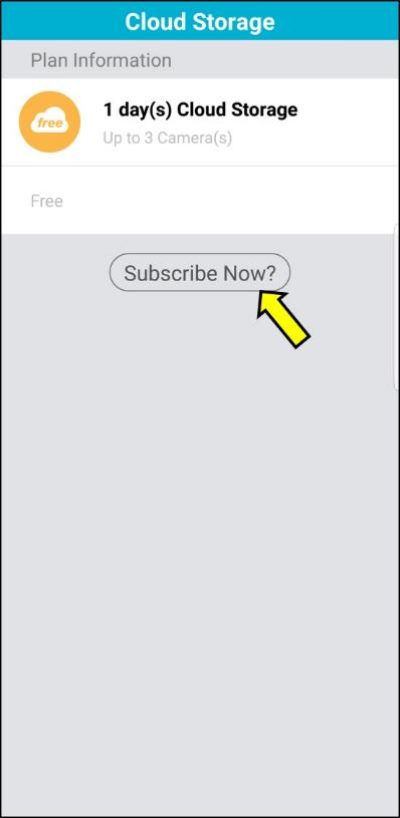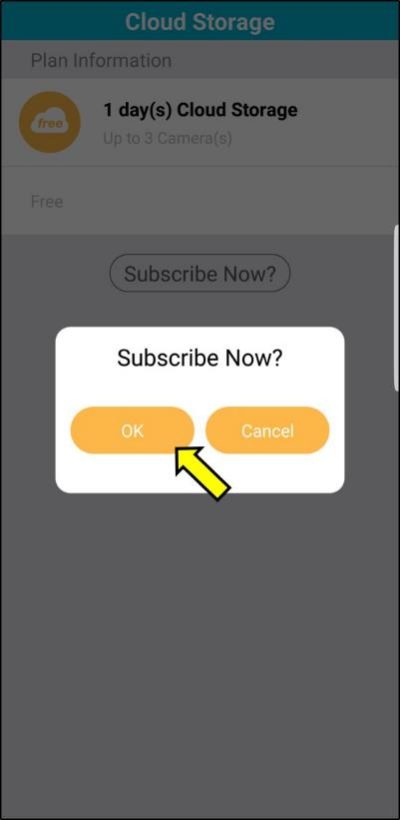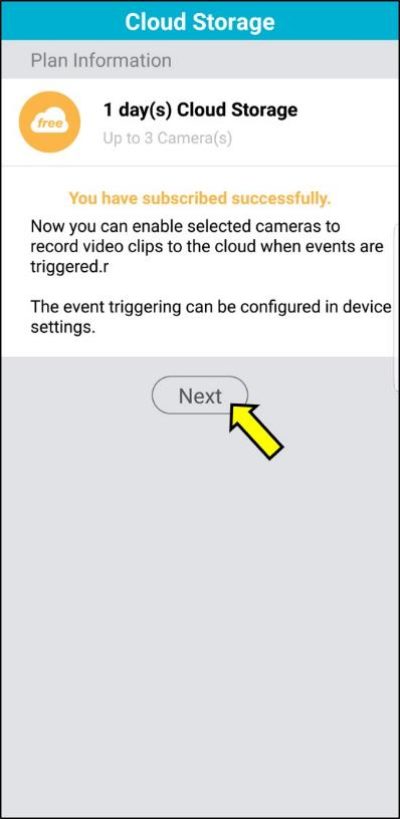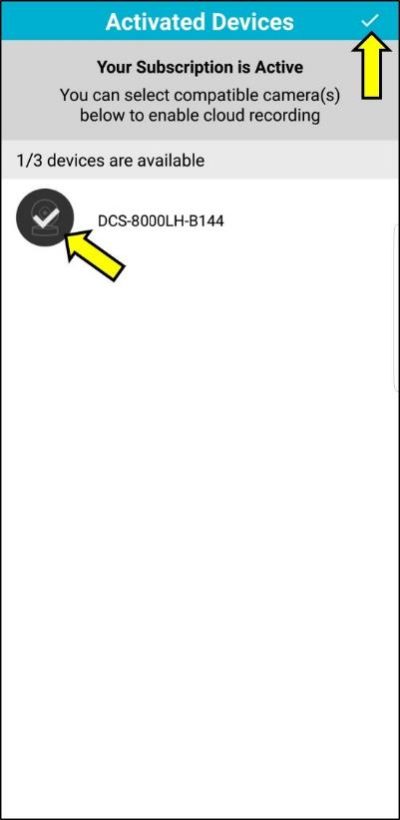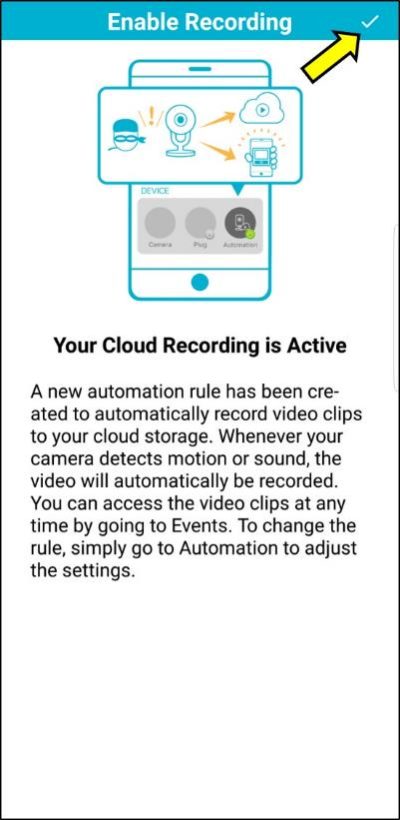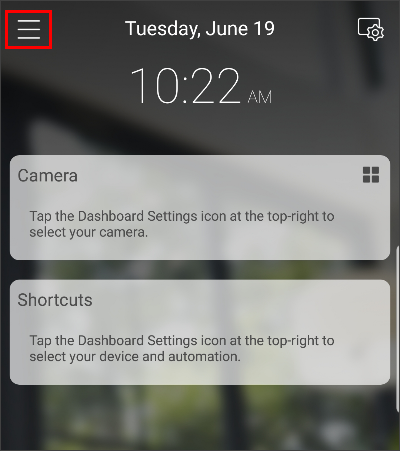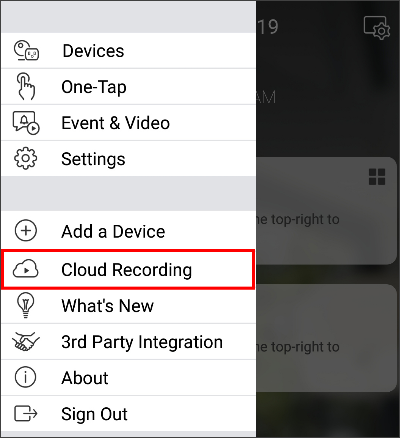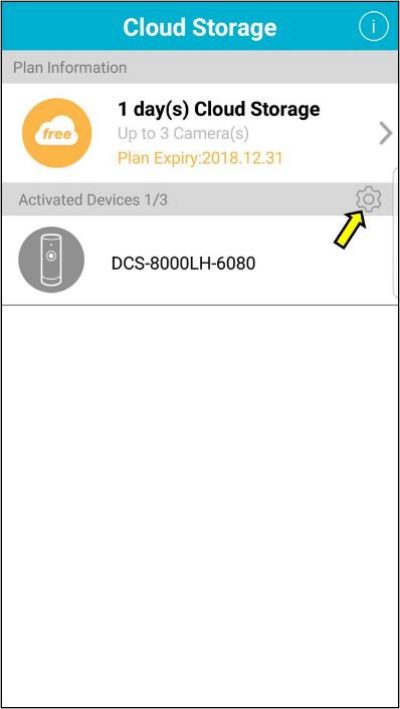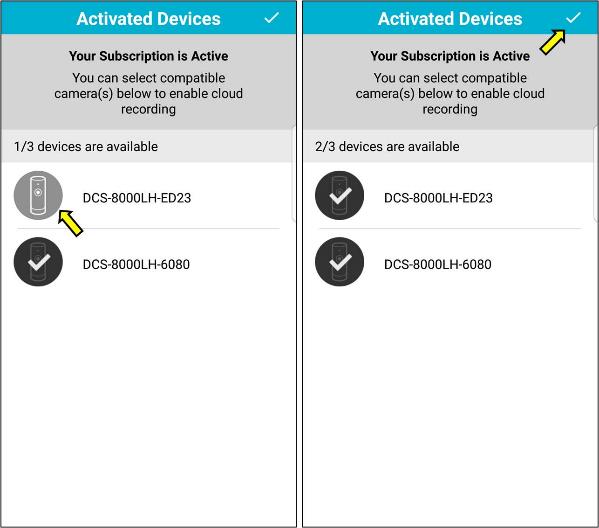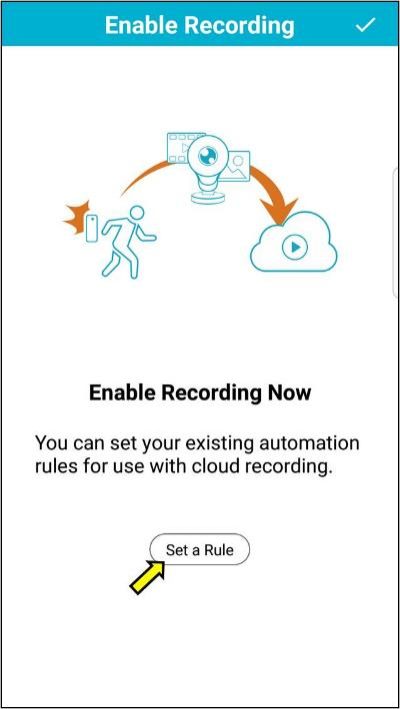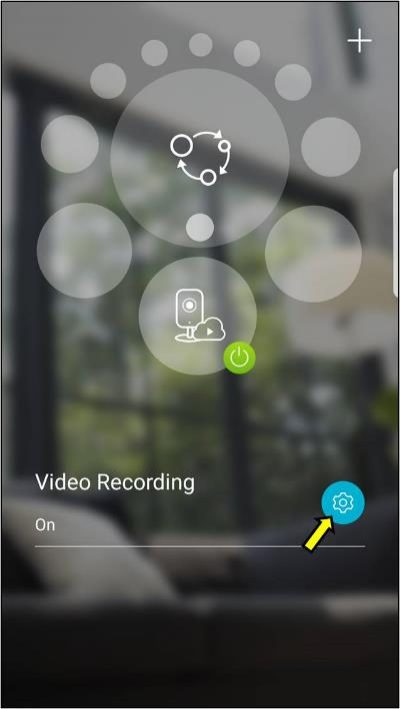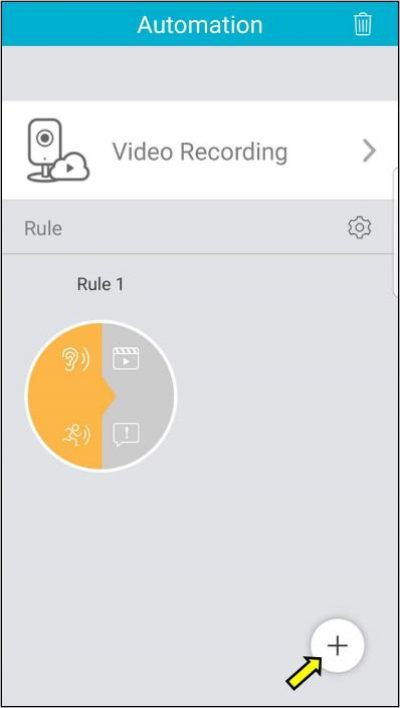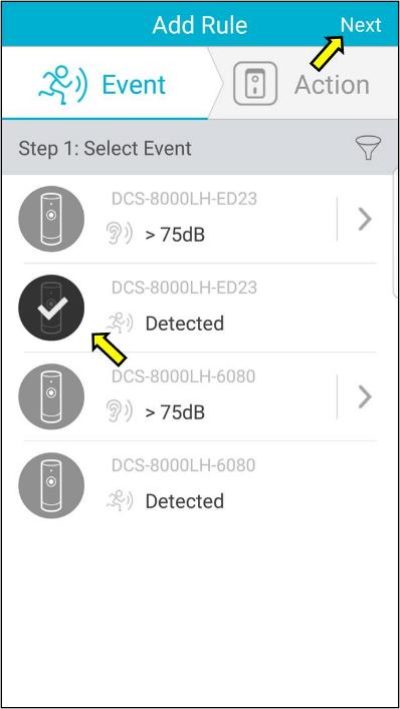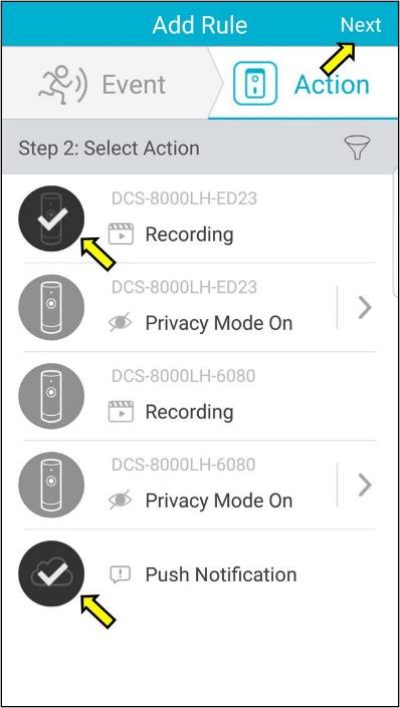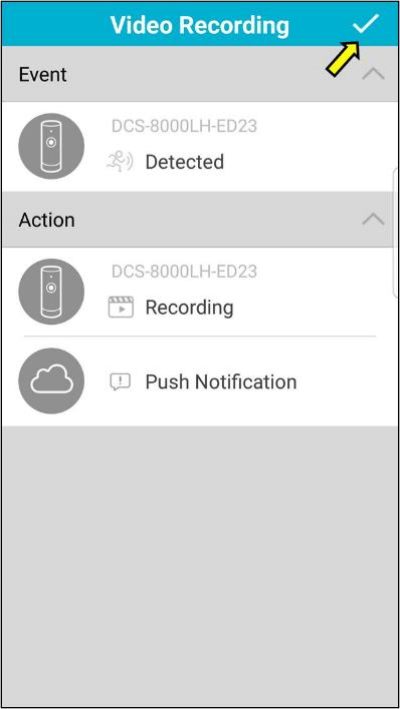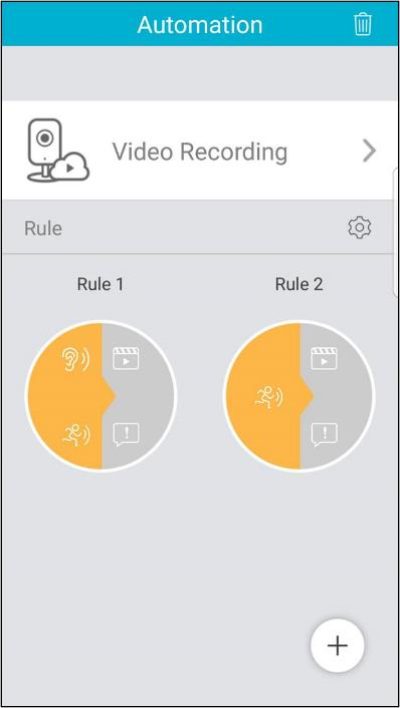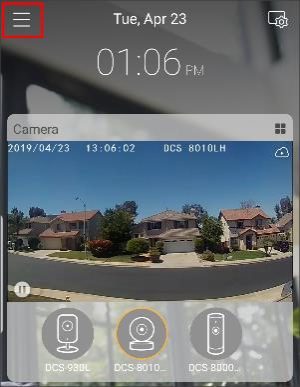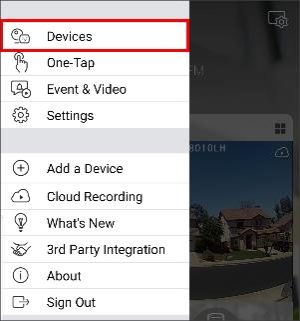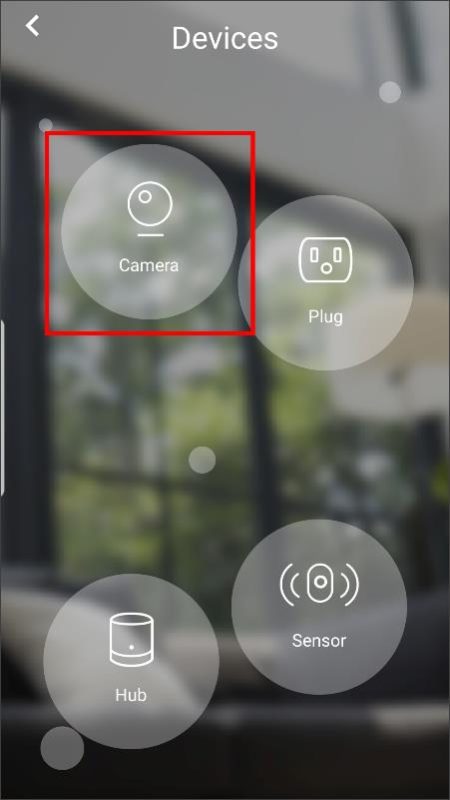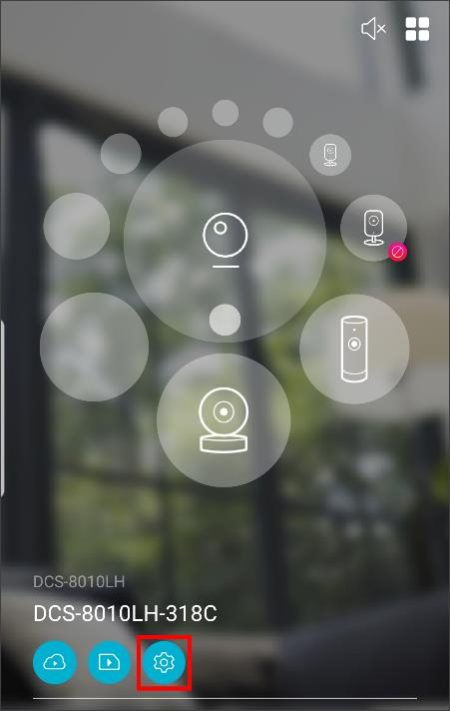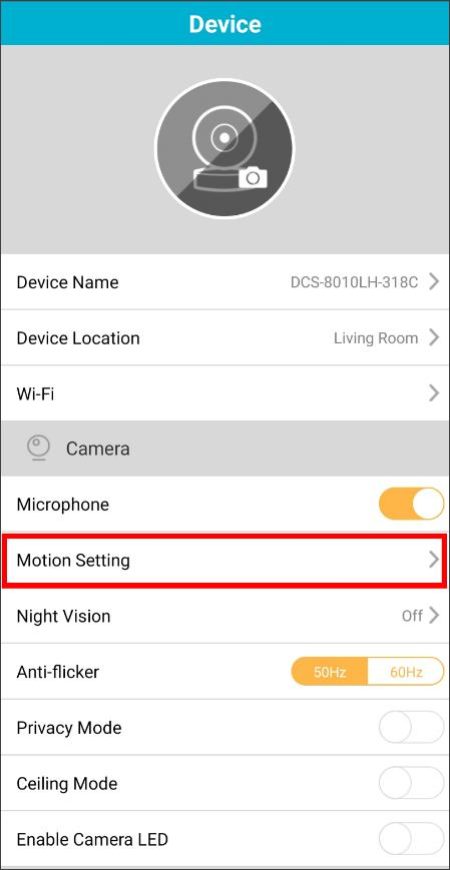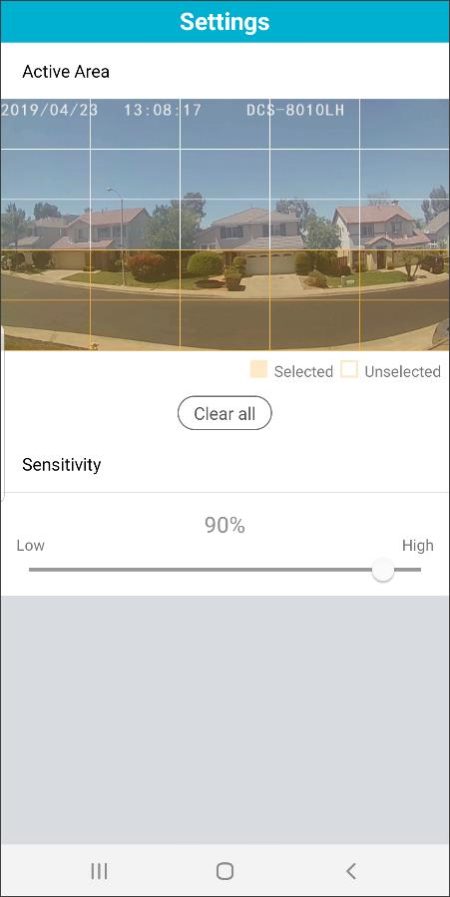Mydlink app setup guide v1, Controlling your smart home can get complicated. That’s why we made the new mydlink app Smarter, Simpler, and More Compatible. Now, you can manage your mydlink cameras, smart plugs, and sensors right from your smartphone or tablet. And, it works with the Google Assistant and Alexa. It’s the smart home that makes your life truly convenient. Your Home, Only Smarter.
To view videos from the mydlink cloud, follow the steps below:
Step 1: Launch the mydlink app.
Step 2: Tap the menu icon in the upper left corner. You can also tap Event & Video at the bottom.
Step 3: Tap Event & Video.
Step 4: Tap Event.
Step 5: At the top, select the day you want to view video from. The videos will be listed newest to oldest and will display if detected by motion or sound. Tap the video to watch it.
Step 6: You can perform the following on the view video screen:
Step 7: Tap back to go back to the list of videos (Timeline). To delete videos, tap Edit in the upper right and then select the videos you want to remove. Tap Remove in the bottom right corner to delete.
.
Note: This Automation example will show you how to setup Recording by Motion.
Step 1: Launch the mydlink app and sign into your account.
Step 2: Tap the menu icon on the top left.
Step 3: Tap Settings.
Step 4: Tap Automation.
Step 5: Tap the + sign.
Step 6: Tap the + sign to add a new rule.
Step 7: Tap the icon next to the trigger type you want (motion or sound detection), then tap Next. In this example, the DCS-8000LH motion detection is selected.
Note: You can select multiple events.
Step 8: Tap the icon next to the event action you want, then tap Next. In this example, Recording (records video to the cloud) and Push Notification (sends a push notification to the device with the mydlink app) are selected.
Note: you can select multiple actions.
Step 9: Tap Save.
Step 10: Tap Go Ahead.
Step 11: Your new automation will appear. Tap on the circle icon under Rule 1 to edit any events and/or actions. Tap the trash can icon in the upper right corner to delete the entire Automation. You can create multiple rules for each Automation. Click the + in the lower right corner and repeat steps 7-10).
Next to the automation name, tap the > to rename and select a different icon (shown next to Automation 1 in the example).
Select which camera line you would like to set up sound detection:
Mydlink app setup guide v1
The following is for the DCS-8xxxLH series cameras. Note that the DCS-8200LH is not compatible with the mydlink app. You must use the mydlink Home app.
Step 1: Launch the mydlink app.
Step 2: Tap the menu icon in the upper left corner.
Step 3: Tap Settings.
Step 4: Tap Automation.
Step 5: Tap the + sign.
Step 6: Tap the + sign to add a new rule (or add to an existing rule).
Step 7: Tap the sound detection trigger and then tap Next. Note you can click the > icon to set the sound level to trigger.
Step 8: Tap the event action(s) you want, then tap Next. In this example recording (cloud) and push notification are enabled.
Step 9: Tap the check mark or Save on the top right, then tap Go ahead.
.
The following is for non-DCS-8xxxLH cameras.
To enable sound detection, follow the steps below:
Step 1: Launch the mydlink app.
Step 2: Tap Devices at the bottom of the home screen or tap the menu in the upper left corner, tap Devices.
Step 3: Tap Camera.
Step 4: Select the camera from the dial and then tap the gear icon.
Step 5: Make sure the microphone is turned on. Tap Sound Detection.
Step 6:Tap the Sound Detection button to turn on if grayed out.
Step 7: The current level of noise will be displayed. To change the noise level at which you want it to trigger, tap and slide the black dot up or down to the desired level. Tap < (iOS) or tap the back button (android) to save.
Step 8: Tap OK.
Step 9: Verify that sound detection is ON.
.
When you first install your camera, motion detection as well as the automation rule (record and notification) is automatically setup. To enable/edit motion detection, follow the steps below:
Step 1: Launch the mydlink app.
Step 2: Tap Devices at the bottom of the home screen or tap the menu in the upper left corner, tap Devices. You can also tap the camera in your shortcuts and tap the live video to access the camera settings (skip to step 5).
Step 3: Tap Camera.
Step 4: Select the camera from the dial and then tap the gear icon
Step 5: Tap Motion Setting.
Step 6: Tap where you want to detect motion (represented by a orange square). Then select the sensitivity (0-100, 100 being the most sensitive). Once finished, tap < (iOS) or tap the back button (Android) to save your settings.
Step 7: Your settings will be saved.
Note: To turn “off” motion detection, tap the Clear All button, and then change the sensitivity to 0. Tap back to save your settings.
.
To setup your camera with the mydlink app, follow the steps below:
Step 1: Launch the mydlink app. Log in with your mydlink account username and password. This will be the same username and password if you have used the mydlink Lite or mydlink Home app. If you have never created a mydlink account, you can create one.
Step 2: Tap the settings icon (3 lines in the upper left corner).
Step 3: Select Add a Device.
Step 4: Tap Yes to scan the QR code.The QR code is located on the label on the bottom of the camera or on the Wi-Fi configuration card included with the product. If the label or card are missing, tap No and select from the drop-down list.
Step 5: If you tapped Yes, scan the QR code. If you are having trouble scanning the QR code, move to a brighter lit area. If you tapped No, select the camera model from the list.
Step 6: Tap Next. Please wait about a minute (or less).
Step 7: Tap Device Location to select where your camera will be setup. Select from the list or scroll to the bottom and tap Add Location to create your own.
Step 8: Tap Choose Your Wi-Fi Network. Select the WiFi network you want to connect the camera to (note this should be the same network that your mobile device running this app is on). Enter the Wi-Fi password and then tap Next.
Step 9: If you want this camera to be displayed on the “Home” screen, tap Add to Shortcut (checked by default). Tap Next at the bottom to continue.
Step 10: The camera will now save your Wi-Fi settings, and then bind to your mydlink account. This process can take up to 3 minutes.
Note: If you receive an error during the Setup Wi-Fi process, make sure you are entering the Wi-Fi password correctly. Remember it is case-sensitive. Also make sure the camera is within range of your wireless router, and that the router has DHCP enabled and does not have any filtering which may block the camera from connecting.
If you receive an error during the Binding process, this usually means the camera cannot connect to the mydlink servers. It is best to reboot your router, close the mydlink app, and reset the camera (hold a paperclip in the reset hole for 10 seconds and release. The LED on the back should turn red). Once your router has rebooted, open the mydlink app and set it the camera again. If you continue to get errors, please contact D-Link support at 1-877-453-5465. Support is free and available 24/7.
Step 11: Once the camera setup is finished, the following message will appear. If you want to add the camera to cloud recording, tap Yes, or tap Later.
Step 12: If you tapped Yes, a new Automation will be created to record video detected by motion to your cloud recording subscription (free or paid). Tap the check mark at the top right corner to finish setup.
.
Note: This Automation example will show you how to setup Recording by Motion.
Step 1: Launch the mydlink app and sign into your account.
Step 2: Tap the menu icon on the top left.
Step 3: Tap Settings.
Step 4: Tap Automation.
Step 5: Tap the + sign.
Step 6: Tap the + sign to add a new rule.
Step 7: Tap the icon next to the trigger type you want (motion or sound detection), then tap Next. In this example, the DCS-8000LH motion detection is selected.
Note: You can select multiple events.
Step 8: Tap the icon next to the event action you want, then tap Next. In this example, Recording (records video to the cloud) and Push Notification (sends a push notification to the device with the mydlink app) are selected.
Note: you can select multiple actions.
Step 9: Tap Save.
Step 10: Tap Go Ahead.
Step 11: Your new automation will appear. Tap on the circle icon under Rule 1 to edit any events and/or actions. Tap the trash can icon in the upper right corner to delete the entire Automation. You can create multiple rules for each Automation. Click the + in the lower right corner and repeat steps 7-10).
Next to the automation name, tap the > to rename and select a different icon (shown next to Automation 1 in the example).
.
To view videos from the mydlink cloud, follow the steps below:
Step 1: Launch the mydlink app.
Step 2: Tap the menu icon in the upper left corner. You can also tap Event & Video at the bottom.
Step 3: Tap Event & Video.
Step 4: Tap Event.
Step 5: At the top, select the day you want to view video from. The videos will be listed newest to oldest and will display if detected by motion or sound. Tap the video to watch it.
Step 6: You can perform the following on the view video screen:
Step 7: Tap back to go back to the list of videos (Timeline). To delete videos, tap Edit in the upper right and then select the videos you want to remove. Tap Remove in the bottom right corner to delete.
.
Step 2: Tap the menu icon in the upper left corner.
Step 3: Tap Cloud Recording.
Step 4: Tap Subscribe.
Step 5: Choose an Available Plan.
Step 6: Tap Subscribe Now.
Step 7: Tap OK.
Step 8: Tap Next.
Step 9: Select the camera you want to enable the cloud recording for, then tap on the  on the top right.
on the top right.
Step 10: Tap the  on the top right .
on the top right .
Step 11: Click here to set up recording on your camera.
.
To add additional cameras with Cloud Recording follow the steps below:
Step 1: Tap the menu icon on the top left.
Step 2: Tap Cloud Recording.
Step 3: Tap the gear icon.
Step 4: Select the additional camera(s) you want to enable Cloud Recording for then tap 
Step 5: Tap Set a Rule.
Step 6: Tap the settings icon.
Step 7: Tap the + on the bottom right to add a rule for the new camera.
Step 8: Select the event you would like to a add to your automation, then tap Next (This example shows motion detection).
Step 9: Select the action you would like to add to your automation, then tap Next (This example shows Cloud recording and Push Notifications).
Step 11: Now you can see the two Rules for the two cameras.
.
When you first install your camera, motion detection as well as the automation rule (record and notification) is automatically setup. To enable/edit motion detection, follow the steps below:
Step 1: Launch the mydlink app.
Step 2: Tap Devices at the bottom of the home screen or tap the menu in the upper left corner, tap Devices. You can also tap the camera in your shortcuts and tap the live video to access the camera settings (skip to step 5).
Step 3: Tap Camera.
Step 4: Select the camera from the dial and then tap the gear icon
Step 5: Tap Motion Setting.
Step 6: Tap where you want to detect motion (represented by a orange square). Then select the sensitivity (0-100, 100 being the most sensitive). Once finished, tap < (iOS) or tap the back button (Android) to save your settings.
Step 7: Your settings will be saved.
Note: To turn “off” motion detection, tap the Clear All button, and then change the sensitivity to 0. Tap back to save your settings.
